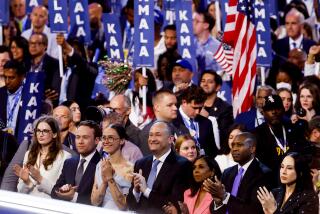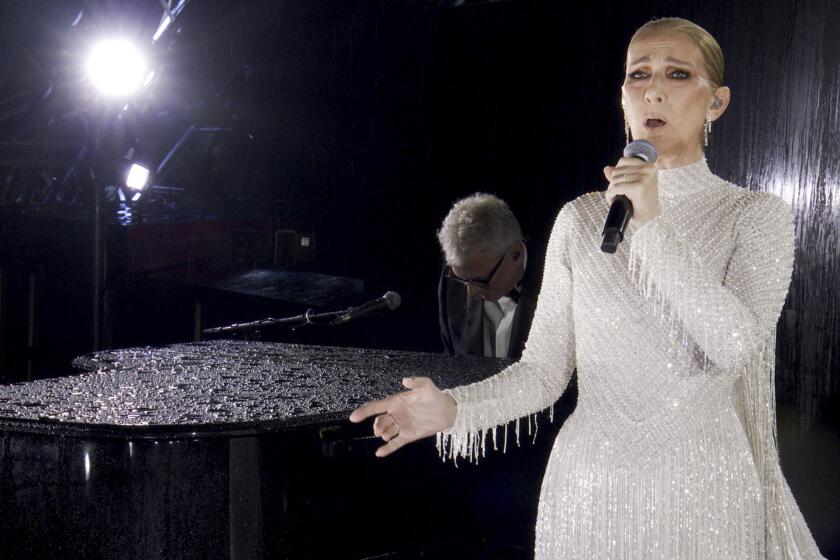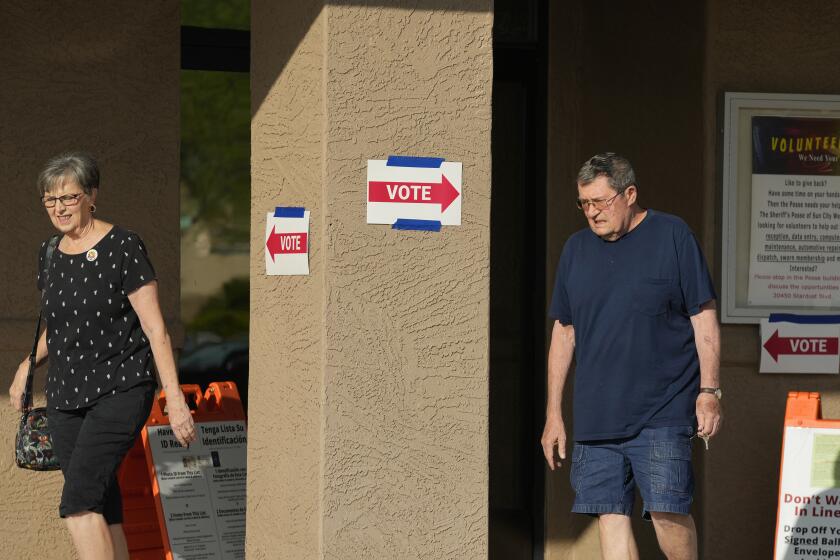Justices Debate Photo Buttons Worn by Trial Spectators
The Supreme Court on Wednesday for the first time took up the question of whether the conduct of courtroom spectators may deprive a defendant of a fair trial and require the reversal of a criminal conviction.
The justices heard arguments in a San Jose murder case in which three members of the victim’s family had worn buttons with small photos of him during part of the trial.
In 1995, a jury convicted Mathew Musladin of fatally shooting Tom Studer, the fiance of Musladin’s estranged wife, Pamela, in the driveway of her home. Last year, the U.S. 9th Circuit Court of Appeals overturned his conviction in a 2-1 decision on the grounds that the photos of the victim may have unfairly influenced the jurors.
During the high court’s debate Wednesday, several justices said they thought trial judges should ban spectators from displaying photos, badges and messages in the courtroom. However, most of them also said they were reluctant to reverse a murder conviction for that reason alone.
At one level, the case poses a clash between the victim’s rights and those of a defendant. At another level, it tests the power of federal judges to reverse convictions from state courts.
Ten years ago, Congress amended the law to say federal judges should not second-guess state judges’ decisions in criminal cases. Federal judges are empowered to reverse state convictions only for violations of “clearly established” law as set by the Supreme Court, the legislation said.
California state lawyers said the San Francisco-based 9th Circuit ignored that rule in this case, and they got some unexpected help from Justice Ruth Bader Ginsburg.
“We haven’t had a case, have we, where it is spectator conduct as opposed to government conduct that’s being attacked?” she asked the lawyer who represented Musladin.
“That is correct,” the attorney, David W. Fermino of San Francisco, replied.
“That certainly goes beyond where our precedent leaves off,” she commented. Her point: How could the 9th Circuit conclude that the California court’s handling of the case violated “clearly established” law as set by the Supreme Court, when the high court had yet to decide such a case?
Gregory A. Ott, a state deputy attorney general from San Francisco, urged the court to reverse the decision and rule that the photos in this case did not prejudice the jury.
“The three simple buttons bearing only a photo did not convey any message of blame [or] guilt, anything other than grief of this family,” Ott said.
He ran into sharp questioning from Justices David H. Souter and Stephen G. Breyer.
It is “quite a bad idea to have buttons being worn in a courtroom, which is not a place for demonstrations,” Breyer said.
“What if three buttons had said ‘Hang Musladin’?” Souter asked. “Wouldn’t that call for overturning the conviction?”
Maybe so, Ott replied, because that would send an explicit message to the jury.
The photos of Tom Studer did not convey a specific message, he said. The state judge who presided over the trial said he saw “no possible prejudice to the defendant.”
Fermino, the lawyer for Musladin, said the justices should prohibit the display of photos by spectators because it creates “an impermissible risk” of influencing the jury. “I think you have to do away with this kind of courtroom behavior. It is simply not acceptable,” he said.
He ran into skeptical questions from Chief Justice John G. Roberts Jr. and Justices Antonin Scalia and Anthony M. Kennedy.
“A typical jury will understand that the victim is going to have a family, and they’re going to be sorry he’s dead, and they might be there at the trial,” Roberts said. “The buttons don’t seem to add much to what the jury will derive from seeing the family seated behind the prosecution bench.”
Kennedy noted that displays of emotion in the courtroom are common. “If the family were there, and one of the members was sobbing, with tears coming out of her eyes ... that has much more impact than a button.”
Even Breyer questioned whether the buttons were a constitutional violation. “Why isn’t this a normal sign of grief?” he asked.
Souter made the strongest defense of the 9th Circuit’s view, but he acknowledged that he may stand alone on the issue.
There seems to be “a pretty darn good argument for saying, ‘Yes, an unacceptable risk has been raised of emotionalism in the jury’s deliberations as opposed to dispassionate consideration of courtroom evidence,’ ” he said. “What, however, do I make of the fact that not a single court has ever reached that conclusion as a constitutional matter?”
Fermino said most trial judges do not permit photos or badges in the courtroom. That may explain it, he said.
That’s not correct, Ginsburg responded. She noted that the California appellate court had cited other cases in which such displays had been permitted. It is hard to see how the state courts came to a conclusion that was either unreasonable or a violation of clearly established law, she said.
By the end of the hour, most of the justices sounded as though they were inclined to reverse the 9th Circuit’s decision.
A ruling on Carey vs. Musladin is expected in several months.
*
More to Read
Get the L.A. Times Politics newsletter
Deeply reported insights into legislation, politics and policy from Sacramento, Washington and beyond. In your inbox three times per week.
You may occasionally receive promotional content from the Los Angeles Times.










